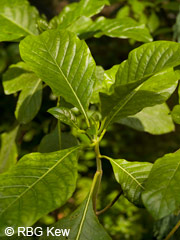Developing medicines
To develop a new medicine it is important to understand how the human body works and how it is affected by a particular disease. A successful medicine treats hundreds of thousands or even millions of patients. It also makes money for the pharmaceutical company which in turn enables them to carry out research into more new medicines to treat more diseases. For any medicine to be successful it must be:
- Effective
it must prevent or cure the disease it is aimed at, or relieve the symptoms for the patient. - Safe
it is very important that a medicine cures a problem without causing unacceptable side effects. - Stable
it is important that the chemicals in the medicine can be used under normal conditions and be stored for some time. - Successfully absorbed and excreted by our bodies
however good a medicine might be in theory, it is no use unless it can reach its target and then be removed from the body once it has done its work.
Research into a new medicine has to make sure that all these conditions are met. This is why it takes a very long time – up to 12 years – and a great deal of money – up to around £550 million – to bring a new medicine into the doctor's surgery.
Steps in developing a medicine
|
Ideas developed, disease targeted
|
|||
|
Potential compounds synthesised in the lab
|
|||
|
In vitro screening – testing the potential medicines on cell cultures, tissue cultures and isolated whole organs
|
|||
|
Animal testing – the small number of molecules which have made it through the first stages are now tested on animals for more information about their likely safety and effectiveness.
|
|||
|
|||
|
If the scientists feel the medicine has passed all the trials, the company sends all the data to the international regulating bodies. If they are satisfied with the research the medicine will be granted a licence and can be prescribed by doctors for their patients to treat certain diseases
|
|||
|
Once the medicine is on the market phase IV trials continue – the efficacy and safety of the medicine is monitored all the time the medicine is used. These long term trials mean that any unexpected side effects which only develop after the drug has been used for a long time, or which only affect a small group of people with a rare genetic makeup, can be picked up and dealt with.
|
Different types of clinical trials
When new medical treatments are being tested there are a number of ways the trials can be run. These include:
-
Randomised trials
most drug trials are randomised after phase II. This means that patients are selected at random to get the experimental treatment or a comparator. The comparator may be a harmless pill with no action (a placebo) or the best available current treatment. -
Open label trials
both the researcher and the patient know what drug they are being given. Sometimes this is inevitable if, for example, you are comparing a medical treatment with physiotherapy or exercise.

© iStock photo.com
-
Blind trials
the researcher knows if the patient is being given a trial drug or a placebo, but the patient does not – they are blind. The problem with this is that the researcher may give unconscious clues to the patient about whether they are getting the new treatment or not. -
Double blind trial
neither the researcher nor the patient know if the patient is being given the trial drug or not. Only a third person who is not involved in the research process has that information. This means that there is no chance of the researcher influencing the patient, consciously or not.










.jpg)



